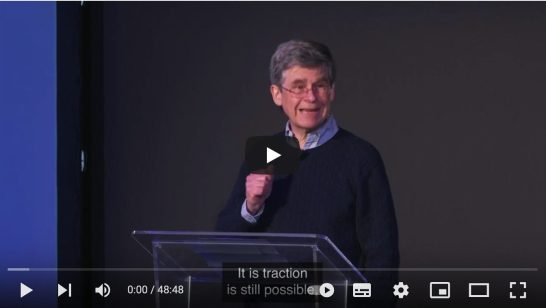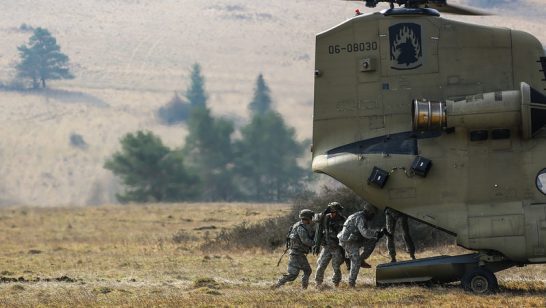
On 29 June, representatives of the states parties to the Treaty on Conventional Armed Forces in Europe (CFE) will convene in Vienna to consider questions relating to the withdrawal of Russia from the treaty. The meeting had become necessary because, on 9 June, Russia had notified the other CFE members of its decision to leave the accord. The Netherlands, as the treaty’s depository, had to convene the meeting within 21 days of the Russian notification before Russia’s withdrawal will come into effect on 7 November 2023, or 150 days after the notification.
In Vienna, states parties will have to decide whether to put the 1990 accord to rest, into a coma, or attempt to inject new life into it. No doubt, Russia will repeat the list of reasons for its decision to leave the CFE Treaty.
In Vienna, states parties will have to decide whether to put the 1990 accord to rest, into a coma, or attempt to inject new life into it. Pal Dunay
The Russian Ministry of Foreign Affairs (MFA) cites these reasons at length in its 9 June notification. They date back to the history of the entire CFE process, include factors related to the treaty’s implementation and revisions, and are also associated with current events and developments. They provide a good summary of Russia’s dissatisfaction with the current European security situation and are a valuable source. The MFA presents a mix of genuine security concerns combined with partially correct arguments and outright counterfactual statements. Further, it also reflects the selective reference to international legal rules that support Russia’s position while being entirely ignorant of those reasons which would not support it.
Russia cites NATO enlargement as the first – and probably most important reason – for its decision to withdraw from the CFE Treaty. In 1990, the treaty was agreed between NATO and the Warsaw Treaty Organization member states while the Cold War security order was already crumbling.
Russia now feels disadvantaged because countries that did not belong to the CFE Treaty as they were not members of the Warsaw Treaty then are now joining NATO. This argument sounds quite convincing at first sight. At a closer look, however, it does not hold up to scrutiny. While the original CFE accord in 1990 established similar aggregate limits of treaty-limited conventional weapons, membership in these two Eastern and Western groups of state parties was not directly linked to NATO or the Warsaw Treaty membership. Even then, six members of the Warsaw Treaty were not interested in creating a situation in which groups of states parties would be identical with alliances. Most of them wanted to leave the Warsaw Treaty as soon as possible and hence did not want to be taken hostage by the CFE Treaty.
It is thus disingenuous for the Russian MFA in its 9 June notification to claim that Finland’s and Sweden’s accession to NATO “was the last straw that prompted the Russian Federation to finally exit the treaty”. This is even more disingenuous because Finland is not the first country to join NATO without being a party to CFE. Estonia, Latvia, Lithuania and Slovenia all joined NATO in 2004, Albania and Croatia in 2009, Montenegro in 2017, and North Macedonia in 2020. None of them had ever been members of the Warsaw Treaty.
Moscow also claims that new countries joining NATO without joining the CFE can and will result in the Western group “bypassing or exceeding the group ceilings under the CFE”. But treaty-limited holdings for each group are sufficiently high to accommodate additional armoured combat vehicles, battle tanks, artillery pieces, combat aircraft, and attack helicopters limited under CFE.
Russia also complained that NATO members never ratified the 1999 Adapted CFE (ACFE) treaty, while Russia did. This so-called Istanbul accord would have moved CFE away from the concept of an Eastern and Western group of states parties and established national and territorial limits instead. While one can argue that the West maybe should have engaged more with Russia and opened the ratification process, rather than introducing a “collective NATO ban” on ratification as it did, it is also true that ACFE fell victim to changing geopolitical circumstances. In any case, Western countries were under no obligation to ratify the ACFE as no executive power can take it for granted that the legislative will ratify a treaty ever or in a certain period of time.
Russia’s complaints about alleged Western violations of the CFE accord conveniently sidestep the implications for conventional arms transfers and deployments of its own war of aggression against Ukraine. Pal Dunay
Russia also argues that there are “other actions by certain CFE states-parties that run counter to the goals of the treaty, in particular, actions concerning the transfer of conventional arms”. However, CFE does not prohibit arms transfers as long as CFE limits are not breached as a result. Not surprisingly, Russia’s complaints about alleged Western violations of the CFE accord conveniently sidestep the implications for conventional arms transfers and deployments of its own war of aggression against Ukraine. To be sure, any violations of treaty limits by Ukraine can be exempted under Kyiv’s right to self-defence. Article 103 of the UN Charter clearly states that “In the event of a conflict between the obligations of the Members of the United Nations under the present Charter and their obligations under any other international agreement, their obligations under the present Charter shall prevail.”
When representatives of CFE states parties gather in Vienna to debate the consequences of the Russian withdrawal, they will have at the back of their mind the fundamental question of whether Russia is a country that can be persuaded by cooperation or whether it cooperates only when confronted with preeminent power, including a military one. Some will argue that Russian aggressions in 2008, 2014, and 2022 demonstrate that Russia ultimately only understands and is deterred by threat or use of force. Others are of the view that Russia is like any other “normal” country that can be persuaded both by cooperation and compellence. In turn, Russia, in order to externalise its problems and victimise itself, has long been identifying the former view with the view of the West.
Arms control operates well in the grey zone between animosity and unlimited trust. Pal Dunay
Arms control operates well in the grey zone between animosity and unlimited trust. Complete trust and cooperation, or massive animosity, make arms control either redundant or impossible.
Russia’s strengths and weaknesses are far from each other. Now, there is only one area where the Russian Federation stands out: The possession of the largest nuclear arsenal in the world. It is highly unlikely that we will soon return to a situation where the level of peaceful competition would make conventional arms control with Russian involvement both possible and necessary.
Arms control is hindered by a Russian perception that the West has exploited Russia’s weakness and cheated it, including in the implementation of arms control arrangements. Thus, the Russia MFA argues that CFE has “definitely become a vestige of the past”, and there is no returning to it.
The West should not just accept this situation. However, it will require ‘strategic patience’ to see success and the emergence of a Western approach that does not just want to maximise the benefits from Russia’s mistakes and weaknesses. Such an approach is possible because Russia’s decision to formally withdraw from the CFE Treaty will not make much difference on the ground.
Moscow suspended its implementation of CFE already in 2007 and terminated participation in the Joint Consultative Group (JCG), the main body overseeing CFE implementation, in 2015. Russia can now freely deploy its armaments closer to the West, including not only the Kaliningrad exclave of Russia but also on the basis of its consent in Belarus. But Minsk remains a party to the CFE Treaty and is unlikely to give anything for free.
Should the CFE Treaty be terminated, this might also have a bearing upon the so-called Tashkent agreement. On 15 May 1992, the former Soviet republics Armenia, Azerbaijan, Belarus, Georgia, Kazakhstan, Moldova, Russia, and Ukraine distributed their armaments holdings under the CFE Treaty. Because Russia and Ukraine are at war, the Tashkent parties will not hold a conference on the implications of Russian withdrawal from the Tashkent accord. But this is unnecessary in any case, as Russia is currently unable to reach the Tashkent accord’s ceilings when its treaty-limited armaments and equipment are being destroyed on a large scale in the zone of war.
Russia’s ambassador in Vienna, Mikhail Ulyanov, has recently argued that Moscow’s withdrawal from CFE “does not rule out the possibility of creating in Europe a new conventional arms control regime that meets modern realities and needs.” However, Ulyanov, an experienced arms control diplomat, cautioned that “this task is not on the agenda yet.” Clearly, the Russian Federation would like to see a changed European security order. However, its actions since 2008 are making this desired order recede, and the security order it will face will most likely be less and less to its liking. Ultimately, the remaining CFE states parties are facing a dilemma similar to the problem raised good 60 years ago by Fred Iklé: “After detection – What?” If an arms control regime centred around one actor and served first and foremost to limit, and as necessary reduce, its arsenal, what shall we do if that country does not play along? Although Iklé wrote about non-compliance, this was mutatis mutandis applicable to a situation when the state that the arms control regime wanted to engage is leaving the regime. What is the meaning of the arms control agreement for those actors that stay? This question is just as topical as it was in the down of the arms control era, and the answer is just as fudged as it could be when Iklé asked his visionary question.
If an arms control regime centred around one actor and served first and foremost to limit its arsenal, what shall we do if that country does not play along? Pal Dunay
The international system, including the European security system, is changing rapidly. While the Russian Federation will get out of its war of aggression significantly weakened, for now, there is not much else to do but reduce the damage and prepare for better times. Think tanks and scholars should sustain the interest in arms control and continue to present (preferably unbiassed) thoughtful ideas so that not everything would be irrevocably lost.
The opinions articulated above represent the views of the author(s) and do not necessarily reflect the position of the European Leadership Network or any of its members. The ELN’s aim is to encourage debates that will help develop Europe’s capacity to address the pressing foreign, defence, and security policy challenges of our time.
Image: Creative Commons, OSCE. At the Paris Summit, Heads of State or Government of CSCE participating States signed the Treaty on Conventional Armed Forces in Europe, a cornerstone of conventional stability and security from the Atlantic to the Urals.



